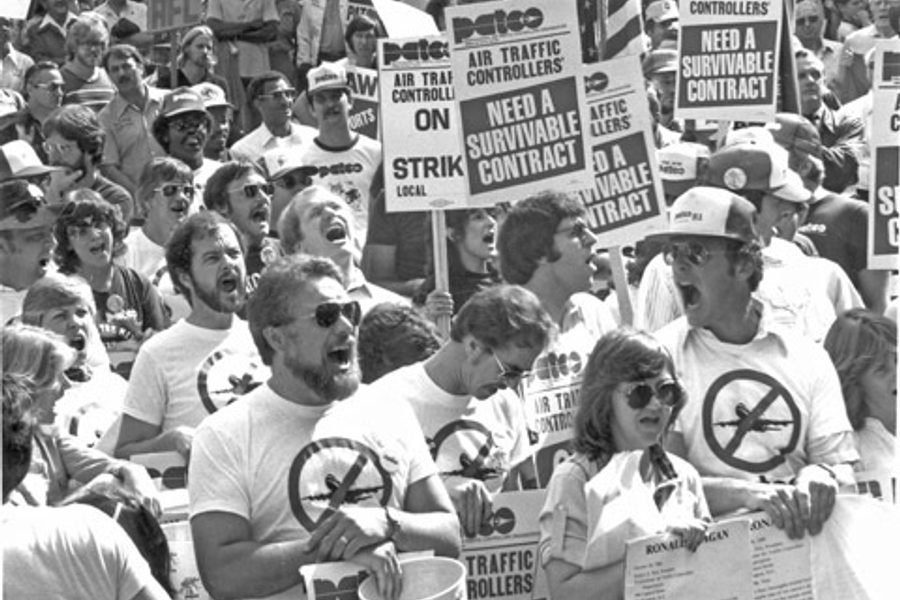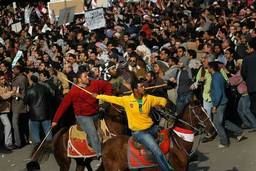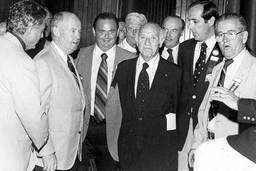
Last week, when the Federal Aviation Administration (FAA) and the National Air Traffic Controller’s Association (NATCA) reached agreement on a new contract, they ended four years of acrimony and apparently restored pay standards and scheduling flexibility to where they should have been all along.
But it brought back bitter memories of 28 years ago, when Ronald Reagan, aided and abetted by former president Jimmy Carter and then-president of the AFL-CIO Lane Kirkland, fired 13,000 striking air traffic controllers, “permanently replaced” them, and drove the bar of U.S. labor relations so deep into the ground that we’ve never recovered.
Here’s how it went down. In 1981, members of the Professional Air Traffic Controllers Organization (PATCO), an independent labor union not affiliated with the AFL-CIO, voted overwhelmingly to strike the government. Within 48 hours of the walkout, Reagan (who ironically had been supported in his campaign by PATCO), fired the lot of them and ordered the FAA to hire permanent replacements.
Replacing strikers in this manner wasn’t against the law, but it had always been considered a “nuclear option” not to be used. Strikers often were fired, to be sure, but when a contract settlement came within reach, the last item to be negotiated usually was a “return to work agreement” essentially rehiring the workers with full seniority, and often with back pay.
Carter, no supporter of unions (even though labor overwhelmingly backed him in his run for the presidency) had set the table for Reagan by authorizing a campaign of harassment of PATCO leaders while he was still president. Twelve months before the government’s contract with PATCO was set to expire, Carter formed a “Management Strike Contingency Force” to prepare for a strike and plot the recruitment of replacement workers..
Kirkland, miffed that the controllers had not consulted him before striking, denounced Reagan’s strike-breaking strategy, but formally ordered AFL-CIO unions not to get involved in supporting the strike. A year later, PATCO was decertified, its members never to be rehired.
The practice of “permanently replacing” striking workers quickly became standard operation procedure in private industry and helped employer after employer either face down strikes or break them. What Carter, Regan and Kirkland conspired to do suddenly made union-busting socially acceptable and empowered corporations to initiate brutal deunionization campaigns. Losses at the bargaining table begat losses in union representation elections, effective strikes began to vanish, and the demise of labor was in overdrive.
In 1993, a campaign was mounted by the AFL-CIO’s semi-autonomous Industrial Union Department (IUD) to pass federal legislation banning the permanent replacement of striking workers. Kirkland refused to get involved and was touring Europe when“striker replacement” was defeated by just a couple of votes in the United States Senate.
Today, despite a much-ballyhooed “split” in its ranks, labor is united in its drive to achieve major labor law reform through the Employee Free Choice Act, which guarantees the freedom of workers to join or form unions through a controversial “card-check” process to determine if a majority in a workplace want a union. The bill also provides for binding arbitration if negotiations over first contracts with corporations, and considerably strengthens labor laws and increases penalties for violating them.
Last week, just as pundits were writing off the chances for Employee Free Choice this year, Pennsylvania U.S. Senator Arlen Spector, wiggling and waggling furiously in an attempt to get re-elected next year, changed his mind again and said he would vote to stop a filibuster when the Act comes up for a vote this fall. Some labor leaders think that if card-check has to be dropped from the legislation, the ban on permanent replacement of striking workers should be called off the bench and put into the game.
At any rate, labor law reform circa 2009 finds the union-side a lot more together. The AFL-CIO’s rival group, Change to Win, outgoing AFL-CIO President John Sweeney, President-to-be Rich Trumka, and President Barack Obama all agree it’s a priority. And maybe, just maybe, striker replacement will end up part of the package.
Ironic footnotes: Randy Babbitt, former president of the Airline Pilots Association (ALPA), was appointed FAA Administrator by Obama, and he helped facilitate the recent settlement (three decades ago, his union also supported Reagan). And many of the members of the present-day air traffic controllers union were strikebreakers in 1981 (today, their union, NATCA, is fully affiliated with the AFL-CIO).
This post originally appeared at Ray Abernathy’s blog, From the Left Bank of the Potomac.







